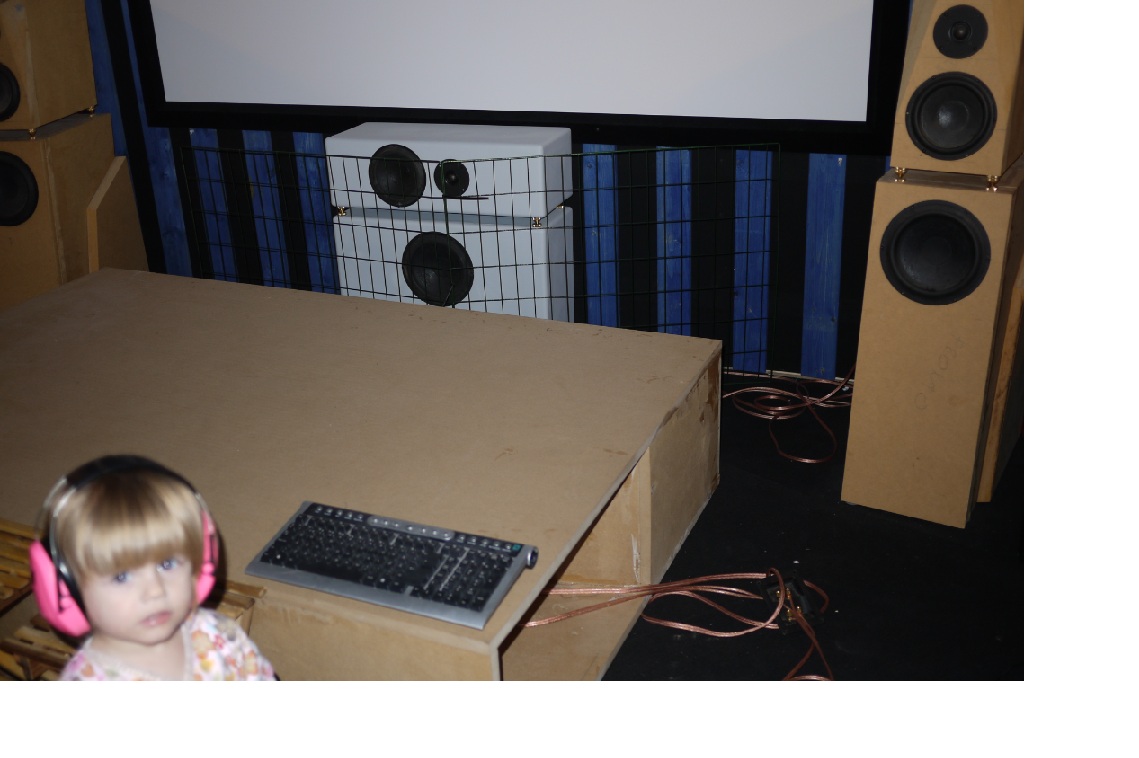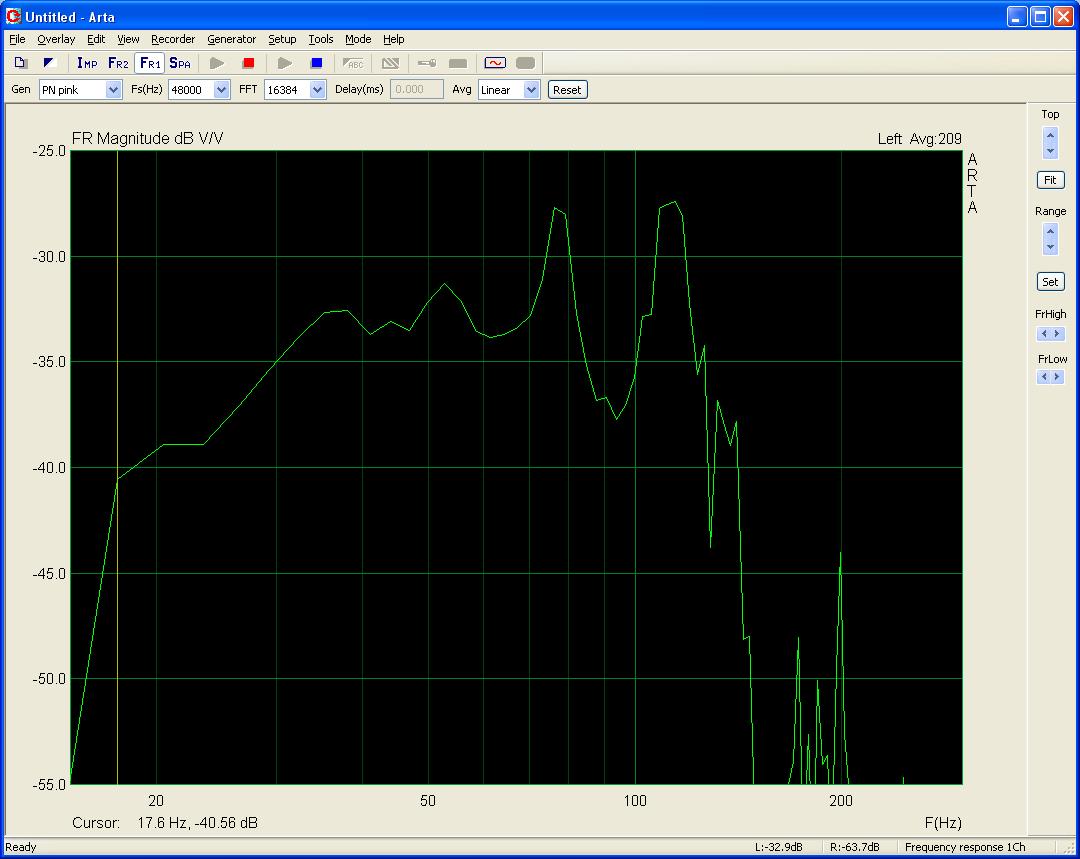I guess ill start off with nothing then, see how that goes.
A proper mic+soundcard for measuring is on my wanted list... 😉
A proper mic+soundcard for measuring is on my wanted list... 😉
Hey Petter is there any way I could get you to PM me the Hornresp file for the 1X12 Kraken? I have a few(well maybe several) 12" drivers laying around and would like to model each of them to see what is more suitable. Thanks a million if you can.
Considering you had a capable amp would it be ok and useful to wire the dual jbl in parallel?
edit, I have read that amps tend to distort more at low ohms and so do speakers (regardless of weather its capable). Yet also I read somewhere that wiring in series creates distortion from back EMF!
edit, I have read that amps tend to distort more at low ohms and so do speakers (regardless of weather its capable). Yet also I read somewhere that wiring in series creates distortion from back EMF!
Last edited:
Hey Petter is there any way I could get you to PM me the Hornresp file for the 1X12 Kraken? I have a few(well maybe several) 12" drivers laying around and would like to model each of them to see what is more suitable. Thanks a million if you can.
S1 225
S4 812
L12 15
L23 475
L34 75
Exp
Welcome🙂
If the Amp is capable of 2.0 ohm, then parallell is to prefer in general. Due to my personal experiences of other builds.
Thanks peter, Interestingly i have seen a 4db gain in max spl(hornresp) by wiring in parallel over series 🙂
Max SPL is determined by power, the power the voice coil(s) can accept whether in series or parallel is the same, though it takes less voltage to achieve the same power in to a low impedance.Thanks peter, Interestingly i have seen a 4db gain in max spl(hornresp) by wiring in parallel over series 🙂
As far as amps distorting at low impedance, depends on the amps, I have some amps that have no problem with 1.5 ohm loads, and others that fold up like a cheap suit with that impedance.
I series the woofers in my monitors and the mids in my main system, it causes no distortion.
If long speaker cable runs are needed (and you don't want to pay for 4 gauge wire), series sub connections can actually improve the sound quality as damping is far better.
I recently did a test for David McBean (Hornresp designer) with eight speakers in series, as expected, each time the voltage is divided between the multiple speakers it is exactly compensated by the doubling of radiating surface area, with a net 0 dB change in level.
Art
S1 225
S4 812
L12 15
L23 475
L34 75
Exp
Welcome🙂
If the Amp is capable of 2.0 ohm, then parallell is to prefer in general. Due to my personal experiences of other builds.
Thanks 😀
Just a quick update, the drivers arrived thursday but since I was out traveling I was unable to fetch them and for some reason they ended up on the local delivery office for companies meaning that they werent open during weekends. I will get them on monday and then I can provide you with the correct measurements if you are still interested.Hi barco,
Post #152: "...I can surely measure when they arrive if you like..."
That would be great. I also noticed the difference between my scaled drawing, and the JBL picture. That's why I'm looking for some confirmation.
Regards,
I also have done the initial measurement on my first horn, will post them here after I have gotten the feedback if I have done something wrong (dont think so...).
Hi barco,
Still interested. 🙂
Regards,
I have one in front of me now.
refering to your picture:
12.3125 is measured to be 313mm
7.8941 is measured to be 181mm
7,5022 is measured to be 174mm
7,0543 is measured to be 160mm
7,2142 is measured to be 155mm
Here is the measured output of my first 212. My design is slightly different since the output is in the bottom and not on the side as the initial design is done (see picture)

Measured 1m from output, 15cm from the floor.

Got two more GTO1214 drivers on the floor now, and I will start building the "house" for these during the weekend.
A minidsp will probably arrive this week and Ill tune the PEQ and filters to smooth out the response as well as make sure I dont get any high frequencies through.

Measured 1m from output, 15cm from the floor.
Got two more GTO1214 drivers on the floor now, and I will start building the "house" for these during the weekend.
A minidsp will probably arrive this week and Ill tune the PEQ and filters to smooth out the response as well as make sure I dont get any high frequencies through.
Looks like it goes way low, what frequency is the cursor line at?Measured 1m from output, 15cm from the floor.
Have you tried other mic positions to determine if the sharp peaks around 80 and 120 Hz are cabinet or room related?
Hi barco,
Maybe a measurement done on the plane of the mouth would reduce room influences.
Regards,
Maybe a measurement done on the plane of the mouth would reduce room influences.
Regards,
After looking at the simulation it appears Barco's sub has the same placement of the upper peaks, probably not a room mode.Maybe a measurement done on the plane of the mouth would reduce room influences.
The low frequency rolloff might be reduced by reducing the exit size.
Attachments
Looks like it goes way low, what frequency is the cursor line at?
Have you tried other mic positions to determine if the sharp peaks around 80 and 120 Hz are cabinet or room related?
Cursor at 17.6 according to the picture 🙂
Hmm, reducing the exit you say, I will see if I can try that. I guess you mean that I will reduce the expansion a bit on the last part?
Hi barco,
Can you post an impedance curve for the sub? Comparing it to the Hornresp simulation might indicate if there are problems, e.g.: air leaks.
Regards,
Can you post an impedance curve for the sub? Comparing it to the Hornresp simulation might indicate if there are problems, e.g.: air leaks.
Regards,
Hi barco,
Can you post an impedance curve for the sub? Comparing it to the Hornresp simulation might indicate if there are problems, e.g.: air leaks.
Regards,
Sorry, dont have the means to do that. But air leaks? Not very likely in this build. Perfect fit for all parts (due to the fact all parts was cut by the local shop and didnt differ at all), and lots of glue.
Yes, clamp a partial cover on, or use another cabinet (short the speaker out so it does not suck acoustical power) to block a portion of the mouth.Cursor at 17.6 according to the picture 🙂
Hmm, reducing the exit you say, I will see if I can try that. I guess you mean that I will reduce the expansion a bit on the last part?
Reducing the mouth area will likely increase LF (slightly), and reduce upper response, which the cabinet seems to have plenty of.
If you keep the drive level the same, it will be easy to see if it helps or hurts performance.
Can you post an impedance curve for the sub?
Ditto. A WT3 can do it quickly for you. If you don't have a WT3, a resistor , a multimeter and a frequency generator (your PC and appropriate software) can be used to plot the impedance at various frequencies.
- Home
- Loudspeakers
- Subwoofers
- Build your own 2x12" TH (The Kraken 212 TH)
